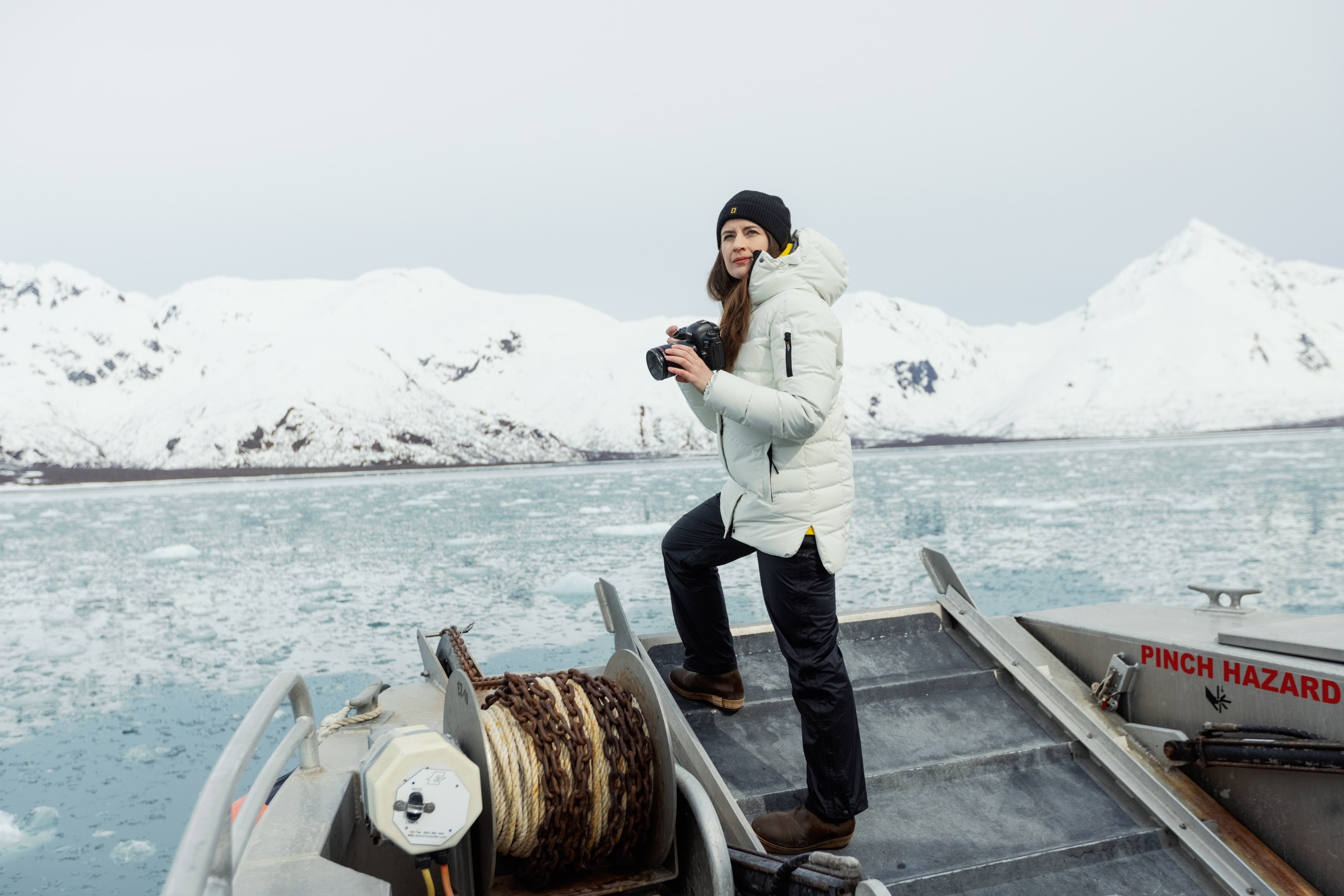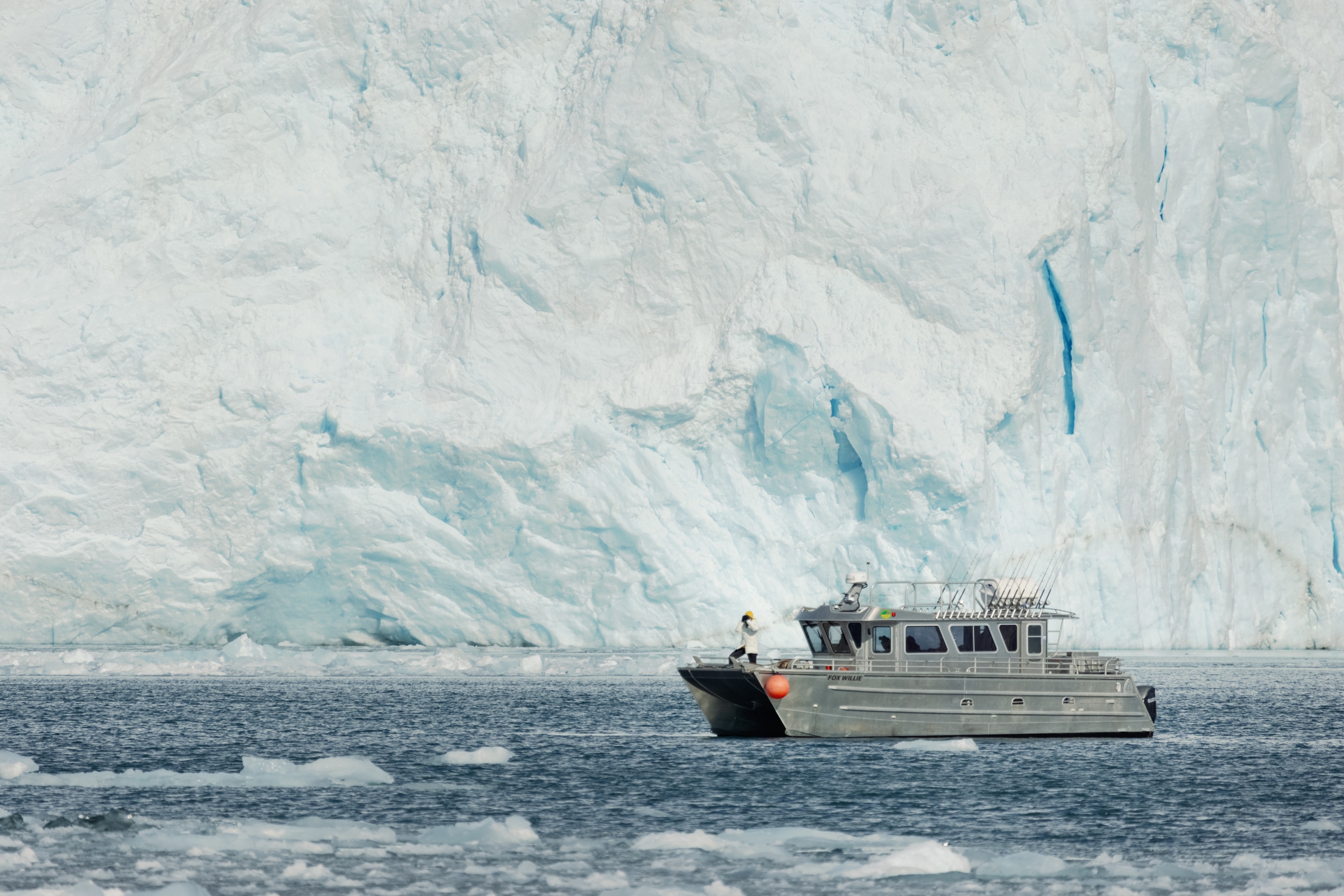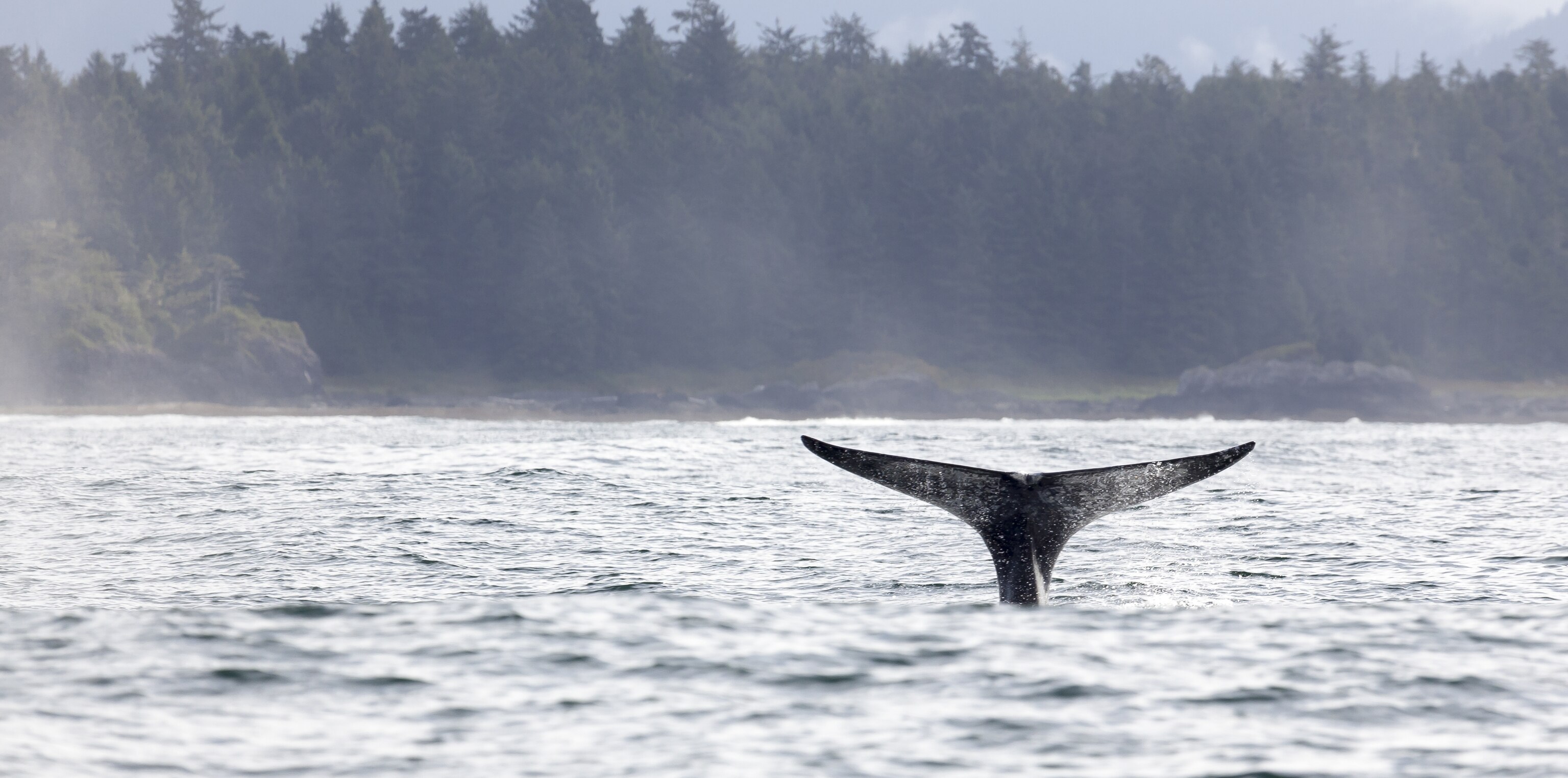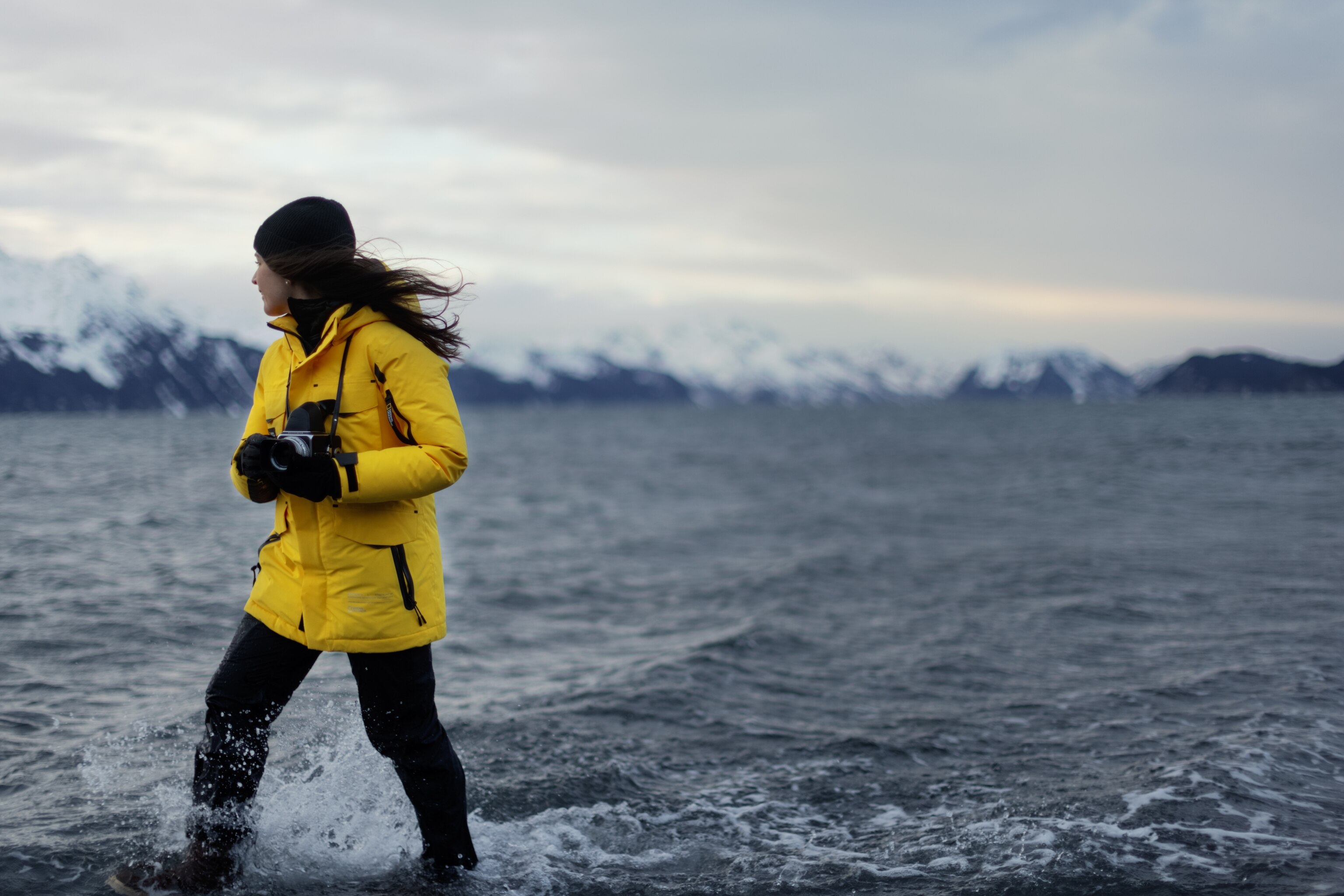The future of Kenai Fjords
The glacial landscapes and coastal waters of Alaska’s Kenai Fjords National Park are a rich repository of biodiversity. But action is needed now to preserve them.
In her early 20s, Acacia Johnson spent a summer camping out in Alaska’s Kenai Fjords National Park assisting wilderness guides with a view to one day becoming a guide herself.
“My tent was still buried in snow when I arrived in June,” she remembers. “It was the first time that I had spent a whole season really just out in the wilderness. And that was the summer that I learned how to use a film camera.”

Today, Johnson, a native Alaskan, is one of the more high-profile photographers of the polar regions― making her an ideal candidate to try out the new National Geographic Apparel Collection of sustainable outerwear in her subarctic home. A National Geographic Explorer who has undertaken more than 50 expeditions to the Arctic and Antarctica, Johnson not only documents the regions’ ecosystems, but the people who live there. She counts that early visit to Kenai Fjords as setting the creative foundation for her career in conservation photography.
“To learn a landscape well takes time,” says Johnson. “To really understand the changes affecting a place requires immersion and deep attention to the cycles of life in that ecosystem―which are lessons that I’ve carried with me in my work.”
Like so much of the north, Kenai Fjords is changing. Just 125 miles (200 kilometers) south of Alaska’s capital, Anchorage, the over 600,000-acre national park is home to the Harding Icefield, the largest icefield wholly within the U.S., as well as dozens of glaciers. And the glaciers provide some of the clearest evidence of the far-reaching changes taking place here.

“In Alaska, temperatures are warming at twice the global average,” says Johnson. “Glaciers that I watched calve into the water as a child have receded into the mountains.” For visitors to the park, this is perhaps most apparent in the plight of the famous and relatively accessible Exit Glacier, whose terminus has been visibly retreating over the last few years.
And yet Kenai Fjords remains a breathtakingly beautiful wilderness, rich in both terrestrial and marine biodiversity. Temperate forests here are home to black and brown bears, moose, beavers, wolverines, and many others, while cetacean species, including orcas and humpback and gray whales can be seen in the park’s surrounding waters, making whale-watching a popular pastime for tourists.
Johnson is particularly enamored of the gray whales that migrate from Mexico, passing Kenai Fjords as they continue north to summer feeding grounds in the Bering and Chukchi Seas. At more than 10,000 miles, the whales’ migration is one of the longest migrations of any mammal―at sea or on land.

But while Kenai Fjords enjoys a wide range of protections as a U.S. national park, these safeguards cannot mitigate the impacts of the global phenomenon that is climate change. There’s a connection between whales and the sea ice that has been melting with such alarming speed across the Arctic over the last few decades.
“The sea ice is the foundation of the Arctic marine food web. Underneath it grows the algae that zooplankton feed on, and those tiny organisms are essential food for animals like fish, seabirds, and whales,” says Johnson. And of course, the biggest creatures in the ocean feed on the tiniest. “So when temperatures change, and the ice isn’t as stable as it used to be,” she explains, “it affects all of those tiny forms of life, trickling down and affecting everything else.”
Johnson’s work has made her acutely aware of the networks of interdependence that characterize life on Earth. “As we grow gradually more disconnected from the natural world, we forget that everything is connected―all of life,” she says.
And because she spends so much of her time in wilderness, Johnson has to think about her own impact on the environment―including what she wears. “I’m always looking for ways to make the gear that I wear more sustainable,” she says. “But you also have a responsibility to yourself―you have to stay warm, and you have to stay safe.”
National Geographic Apparel aims to strike a balance between these concerns, and Johnson was able to try out some of the signature pieces in the new Fall/Winter Collection, including the iconic Explorer Insulated Coat, on a recent visit to Kenai Fjords National Park. Designed to accommodate a wide range of weather conditions, the coat is waterproof, windproof, and breathable. And it’s made using PET from recycled plastic bottles along with other cutting-edge biosynthetic materials.
“I was impressed by how genuinely warm and weatherproof the coat is,” Johnson says. “I get cold easily, but putting it on felt like being wrapped in a sleeping bag. Perfect for a long day on the water in the cold, and the rapidly changing elements of the landscapes that I love so much. And it’s a great reminder that choosing more sustainable materials doesn’t need to compromise quality or warmth.”
In the outdoor clothing sector, synthetic textiles have often played a central role thanks to their insulating and water-resistant properties. Typically, these have been polyamides made from petroleum-derived compounds. This is beginning to change as innovative new biosynthetics made from renewable sources enter the market. Choosing gear that’s as sustainably made as possible isn’t the whole answer of course―but scaled up, these relatively small personal decisions can have a very big impact.
“The details of our personal lives affect the world on a much greater scale than I think we realize,” says Acacia. “I think more and more people are coming to realize just how important sustainability is moving forward toward hopefully a future that is in better balance with the natural world. But we have to act if that’s going to happen.”

Discover the new National Geographic Apparel Collection: adventure-ready clothing with sustainability at its core.
Visit thecorem.com/nationalgeographic to shop the collection.
